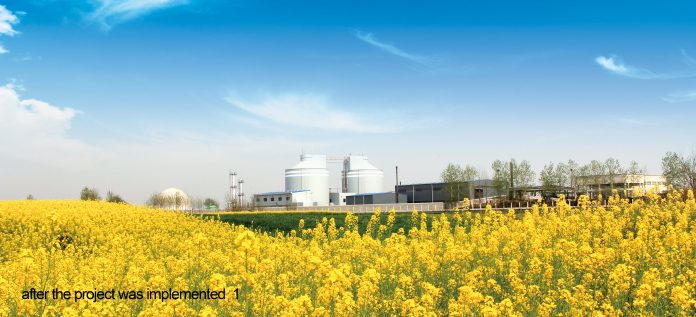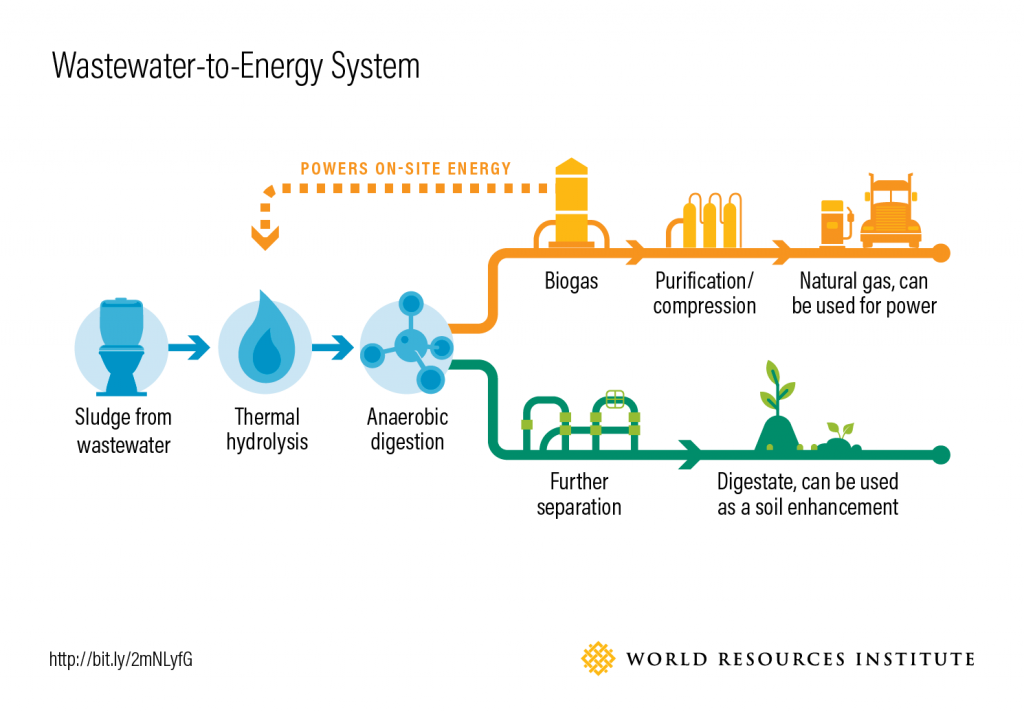
Why Asian cities are adopting and scaling sludge-to-energy systems. By Aditi Sahay
Each year China’s cities must absorb 10 million people, who excrete an extra 1.5 million kilogrammes of faecal matter and an additional 3 million litres of urine. As urbanites flush away their biological waste, requiring treatment of three times more wastewater in 2016 (54.2 billion m3) than in 2007, the country’s 4,000 urban wastewater plants struggle to cope with the pressure.
Many falter. The cities often lack budgets, time, data, and skilled staff to properly treat human waste. But even those plants that do get left with large volumes of a messy by-product: 40 million tonnes of slurry, a toxic cocktail known as sludge.
That amount marked a 16 percent increase in sludge over the previous year, putting China’s nearby aquifers, food and soil increasingly at risk and posing an urban health threat on a par with smog.
Beijing’s leaders decreed cleaning it up. But that’s easier said than done. Sludge treatment is both expensive and energy intensive, costing plants US$36-81 per tonne while devouring a third of municipal power.
For all these reasons, a Tsinghua University study found that less than 20 percent of sludge even gets properly treated. Most is illegally dumped, put in landfills, burnt, or spread out as heavy metal- and pesticide-laden fertiliser, whereupon it leaches into water bodies.
But the combination of mandates, technology transfers, and economic incentives is changing all this, as a handful of pioneering urban treatment plants convert their toxic liability into a clean asset: biofuel.
“Dumping the sludge was a much cheaper way of dealing with it than treating,” says Zhong Lijin, an expert at the Beijing office of the World Resources Institute (WRI), a global research organisation headquartered in Washington DC. But now “China is in a transitional stage of development, and needs to think of sustainable sludge treatment methods.”

Converting sludge into clean energy starts by breaking down the slurry. Thermal hydrolysis combines the high-pressure boiling of waste or sludge with rapid decompression. Anaerobic digestion harnesses microorganisms to break down biodegradable material in the absence of oxygen.
Much of the end product can–with political will, tools and incentives–be recaptured as a gas, liquid or solid fuel. These clean biofuels can be used to generate electricity to run the plant itself, used directly as fuel to produce heat for operating the system or be further processed into transport fuels. Another sterile by-product of treatment, biochar, can be used as a soil enhancement to grow trees on landfill sites that help lower temperatures, capture atmospheric carbon, and improve air quality.
Such an approach may not work everywhere. But in China’s Hubei province, the city of Xiangyang exemplifies the combined push-pull to develop clean infrastructure with public and private investment, as that city has pioneered innovative sludge treatment solutions.
“The Chinese government requires that each city should solve the problem of sludge pollution in the next few years,” says Yue Zhang, former Director General of the Urban Water Management Office at the Chinese Ministry of Housing and Urban-Rural Development. “This is a political requirement that has been incorporated into the assessment index of local officials.”
Success didn’t emerge overnight, or out of nowhere. In the summer of 2015, Zhang was part of a Chinese delegation that visited Blue Plains, in Washington DC to tour the world’s largest advanced wastewater plant. The tour showed how large-scale sludge treatment was not only technically plausible, but made economic sense. The delegation’s new understanding helped Beijing make faster investment decisions and accelerated construction of other plants around China.
“We got to know Blue Plain’s long- term research and demonstration process, and their final choice,” says Zhang. “Also, since it was based on the green, circular, low-carbon economy, this was likely to be a sustainable option.”
There’s a considerable environmental upside of a sludge-to-energy treatment plant. Recovering nutrients from the sludge slashes downstream emissions that might grow from untreated effluent in water bodies. And the natural biogas can be compressed and used as fuel (CNG) reducing carbon emissions by 140,000 tonnes. For the first two months, the Xiangyang plant burned four tonnes of coal per day, but has since been running on its own self-generated clean energy.
To affluent European and North American cities, sludge-to-energy may not feel that ‘new’. But what makes Xiangyang a game-changer is that it shows how, now, even booming cities in the developing world can adapt the technology, and scale up gains to meet climate mitigation targets.
A recent World Resources Institute (WRI) study projects that if all the sludge and kitchen waste produced in Chinese cities is treated by a waste-to-energy approach, 6.6 billion m3 of methane could be produced, which is equal to 9 percent of China’s total methane emissions in 2012. Besides meeting the energy demand of the projects operation, the remaining methane could be used to substitute 4.2 million m3 of gasoline for vehicle use. China’s 13th Five-Year Plan (2016-2020) has the goal of reducing coal consumption from 62 to 58 percent by 2020, and setting up plants will help achieve this target.
Beijing has mandated that 90 percent of urban sludge must be toxic-free by 2020. But regulations alone didn’t tip the scales for Xiangyang’s success; economic forces did. “This project can be duplicated and promoted in other areas,” says Jing Liu, a private investor who backed the project. “The reasons for this are the current advocacy of the circular economy and the fact that many banks are willing to provide support for this type of project. Financing for the sludge-to-energy project is not very difficult.”
For all its benefits, obstacles remain. At the policy level, it remains unclear what is to be done with the rest of the treated sludge. “We have adopted advanced sludge treatment technology, and the treated sludge is of good quality and can be reused,” says Bai Yu of the Beijing Drainage Group, a state-owned company that uses similar technology to treat sludge around the Beijing urban area. “However, national policy is not very clear, which makes it difficult to reuse the treated sludge”.

Chinese officials, worried about the toxic content of treated sludge, have prohibited its use on farmland. But further treatment could pay for itself. “If the national policy becomes more supportive of the sludge-to-energy project,” adds Bai Yu, “the products can be packaged and sold in the market, and more economic benefits can be gained.”
Another challenge is cultural. Traditional engineering and design engineers must learn how to retrofit existing plants to operate using thermal hydrolysis technology. But new courses in China and India are helping teams understand how to treat sludge in ways that reduce emissions.
International groups praise sludge-to-energy treatment processes for combining environmental, urban, agricultural, economic, energy, finance and climate sectors, thus helping advance several SDG goals at once.
“What is really appealing about this project is that it brings together multiple elements of interest,” explains Betsy Otto, Director of WRI’s Global Water Program, including “water management, reduction of greenhouse gases, air pollution and solid waste management. These have gone beyond the classic realm of managing waste, allowing wastewater to become a true resource.”
Worldwide, the UN has estimated the value of human waste converted to fuel at US$9.5 billion. But that’s abstract, on paper. China has taken the spark from Washington DC to Xiangyang, kindled it in other cities around China, and shared it across borders.
India faces similar challenges with water resources and wastewater treatment, and it too has started looking at the feasibility of sludge-to-energy projects. The Qualcomm Foundation has explored policy gaps, hoping India, which lags two decades behind in urbanisation and wastewater management, can learn from China’s experiences to prepare for the forthcoming surge in urban toilet slurry and the need for better sludge management.
As the “output” of Asia’s cities harnesses its own waste as an “input” to fuel treatment operations and grow food, sludge-to-energy unlocks the power of the circular economy for billions who need it most.








